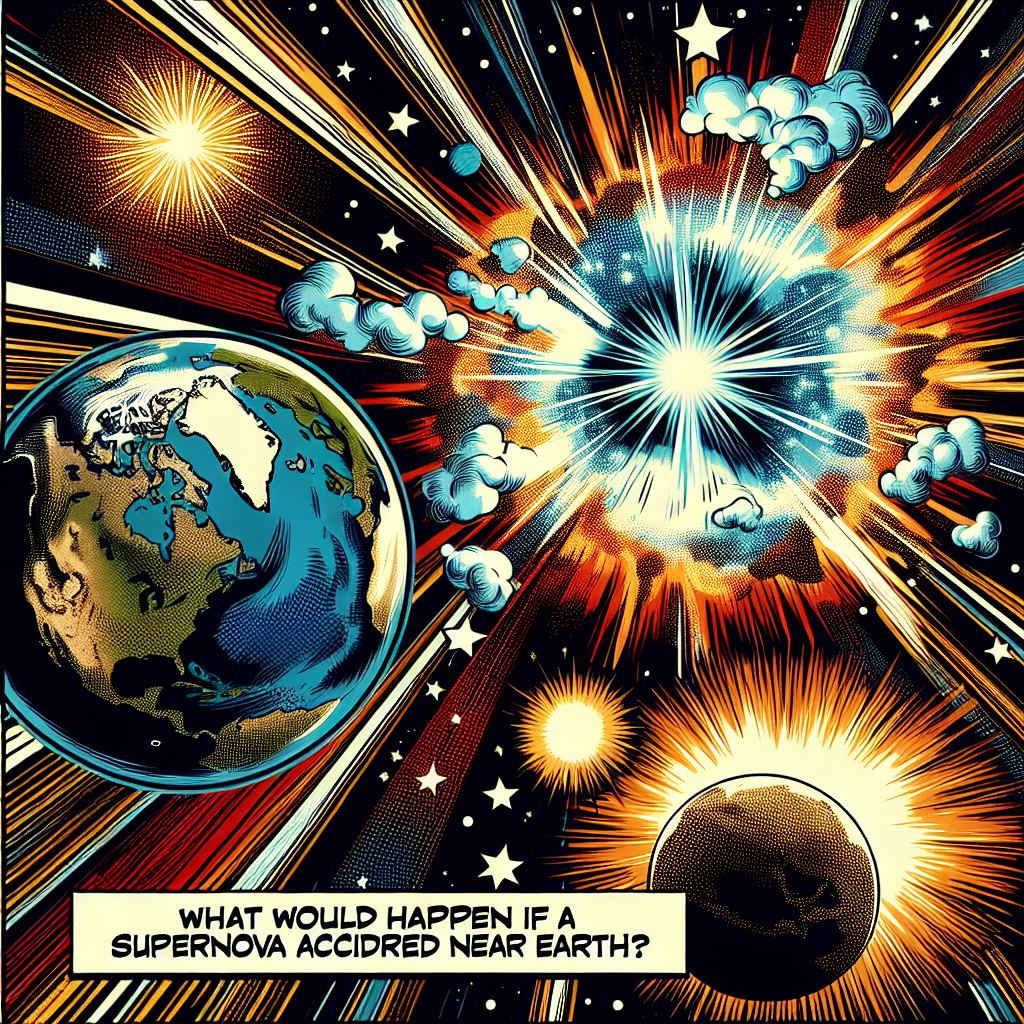A supernova is an incredibly powerful and rare astronomical event in which a star explodes, releasing an enormous amount of energy into space. Imagine a gigantic cosmic firework, but instead of just being a colorful display, it's a blast of energy that can be seen from millions of light-years away.
To put this in perspective, a supernova can release as much energy as the sun would produce over its entire 10-billion-year lifespan. This energy is so immense that it would be equivalent to detonating hundreds of billions of nuclear bombs simultaneously.
If a supernova were to occur near Earth, the consequences would be catastrophic. The first concern would be the initial blast of gamma radiation, which would be lethal to any living organisms within a few hundred light-years. This radiation would be so intense that it would ionize the atmosphere, causing a massive electromagnetic pulse (EMP) that would cripple our technological infrastructure.
Here's a breakdown of the effects of a nearby supernova on Earth's atmosphere:
- Gamma radiation: would be the first wave of energy to reach us, potentially devastating our ozone layer and causing a global "nuclear winter"
- X-rays and extreme ultraviolet radiation: would follow, heating up the atmosphere, causing it to expand, and potentially leading to a prolonged "space weather" event
- Visible light and heat: would then arrive, potentially causing massive wildfires, and a prolonged period of scorching temperatures
The subsequent blast of cosmic rays would also be harmful to life on Earth, causing mutations and damage to our DNA. Prolonged exposure to these high-energy particles would increase the risk of cancer and other health problems.
Assuming the supernova is close enough, the explosion would also send a massive amount of debris hurtling towards us, including elements forged in the intense heat of the explosion, such as iron, nickel, and gold. This shower of heavy elements would contaminate our atmosphere and potentially lead to a prolonged period of acid rain.
The effects on Earth's climate would be severe, with the potential for a prolonged "impact winter" – a period of cold and darkness similar to what occurred after the dinosaur extinction event. The debris would also block out sunlight, affecting photosynthesis and potentially leading to widespread crop failures.
In the aftermath, the supernova remnant would expand, creating a vast, glowing nebula that would be visible in the night sky for centuries. This remnant would also accelerate cosmic rays, affecting the solar system's magnetic field and potentially altering the Earth's own magnetic field.
A nearby supernova would also have a profound impact on our technological infrastructure, potentially crippling our power grids, communication systems, and other critical infrastructure.
To put this into perspective, a supernova would need to occur within about 100 light-years of Earth to cause catastrophic damage. The closest star capable of going supernova is Betelgeuse, which is approximately 640 light-years away. While it's possible that Betelgeuse could explode in our lifetime, it's not close enough to cause the devastating effects described above.
In conclusion, a nearby supernova would be an unprecedented disaster, with far-reaching consequences for our planet and our technological society. While the likelihood of such an event is low, it's essential to continue monitoring the skies for any signs of imminent supernovae, allowing us to better prepare for the worst-case scenario.

Popular Space Questions
Find answers to the trending space questions being asked by our community on social media.
- How many galaxies are there in the universe?
- What would happen if a rogue planet entered our solar system?
- How far is Pluto from Earth?
- How many planets are in the Milky Way?
- How many planets are in our solar system?
- How big is the Earth?
- What are the planets in order?
- How big is the universe?
- What would happen if a pulsar's beam hit Earth?
- What if we found a way to manipulate gravity?